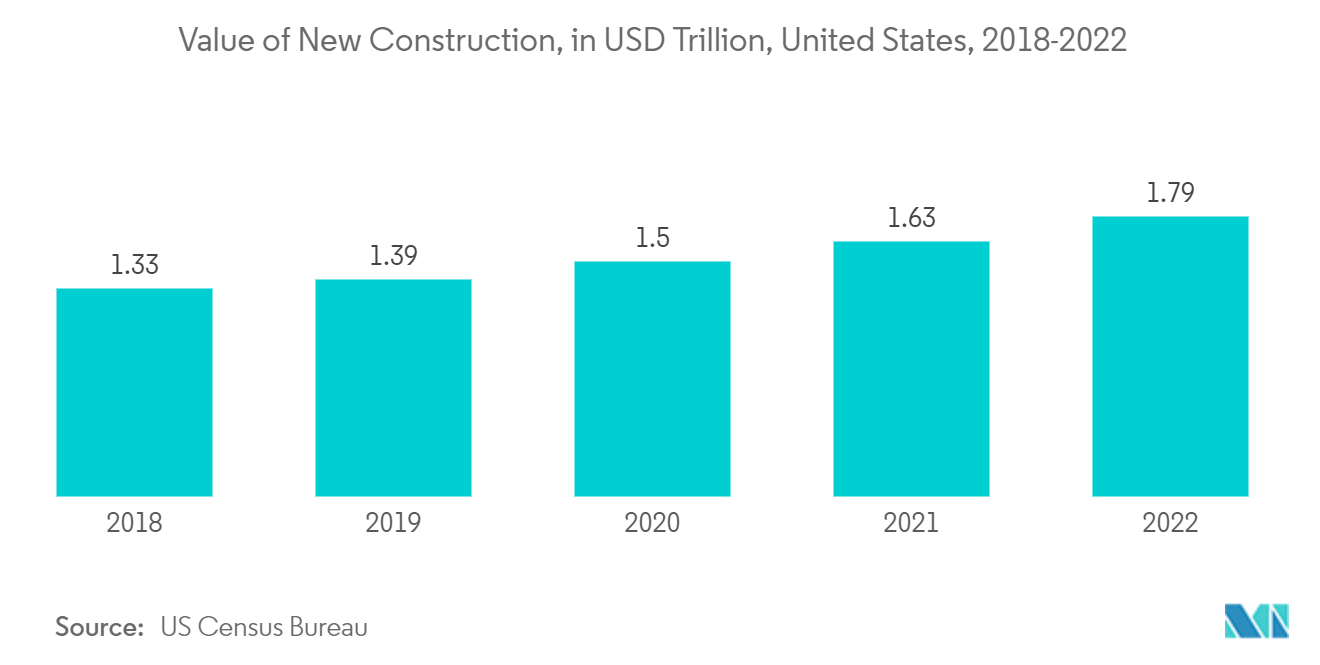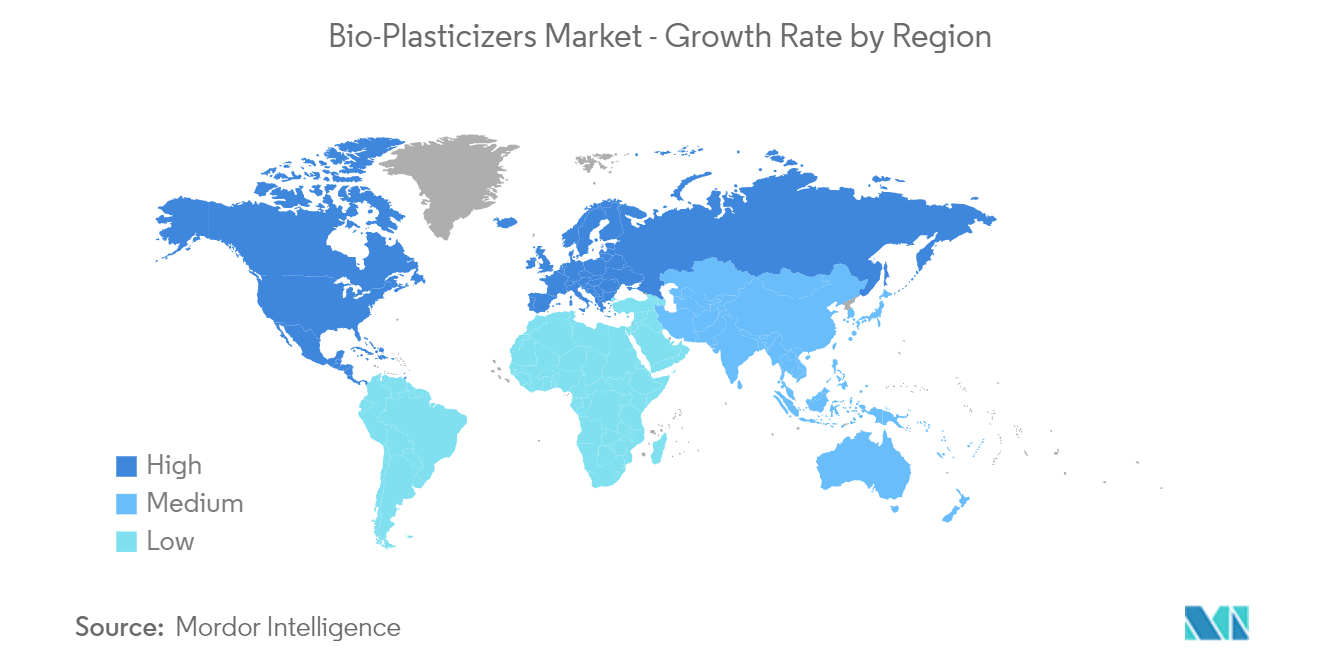Market Trends of Bio-plasticizers Industry
Increasing Demand from Flooring, Roofing and Wall Covering
- Bio-plasticizers help reduce water requirements and make concrete strong and workable. These are generally organic substances or a combination of organic and inorganic substances that help reduce water content for workability.
- The quantity of plasticizers added is about 0.1%-0.4% by weight of cement. This amount reduces 5%-15% of the water requirement and also leads to an increase in workability from about a 3-8 cm slump. A plasticizer, in general, entrains less than 2% air.
- According to the National Bureau of Statistics of China, the output value of the construction works in the country accounted for CNY 25.92 trillion (USD 4.02 trillion) in 2021, compared to CNY 23.27 trillion (USD 3.37 trillion) in 2020. This led to an increase in the demand for flooring and wall covering, which, in turn, increased the demand for the bioplasticizers market.
- In India, the construction sector is an important pillar for the growth of the economy. The government is taking a number of steps to make sure that the country has good infrastructure by a certain date.The Indian government has been actively boosting housing construction as it aims to provide houses to about 1.3 billion people.
- Furthermore, according to the US Census Bureau, the annual value of new construction put in place in the United States accounted for USD 1,792 billion in 2022, compared to USD 1,626 billion in 2021. Moreover, the annual value of residential construction put in place in the United States was valued at USD 908 billion in 2022, an increase of 13% compared to USD 803 billion in 2021.
- Thus, with the growing demand for the conservation of water resources, the use of plasticizers is rapidly increasing in flooring and wall coverings.
- Owing to all these factors, the demand for bio-plasticizers is likely to grow across the world during the forecast period.

The Asia-Pacific Region to Dominate the Market Growth
- The Asia-Pacific construction industry is the largest in the world. It is growing at a healthy rate because the middle class is getting richer and more people are moving to cities.
- The expansion of the industry has also benefited from the addition of infrastructure and the entry of significant players from the European Union into China's lucrative market.
- China's construction industry has developed rapidly in the past few years, due to the central government's push for infrastructure investment as a means to sustain economic growth. China was leading in the construction industry, with an added value of USD 1.29 trillion in 2022.
- Also, the total floor space of new homes built in Japan in 2022 was about 69 million square meters, which was less than the 70 million square meters built in 2021. Additionally, in 2022, approximately 859,500 housing starts were initiated in Japan. This led to an increase in the consumption of bio-plasticizers for applications like wire, cables, flooring, and wall coverings.
- Foreign investment restrictions have also been lifted for land development, high-end hotels, office buildings, international exhibition centers, and building and running big theme parks. Over the next few years, the bioplasticizers market in the region is likely to grow due to growth in the infrastructure and transportation sectors.
- The Packaging Industry Association of India (PIAI) also says that India is becoming a place where the plastic packaging industry likes to be. The packaging industry is the fifth-largest sector in the Indian economy.
- The healthcare industry is growing steadily, with spending on healthcare and the number of medical facilities in the country going up every year. Indian government policies that have been made more open have also made it possible for 100% foreign direct investment in the medical devices market.
- In India, the government introduced the world's largest government-funded healthcare program, the NHP Scheme. In the Economic Survey of 2022, India's public expenditure on healthcare stood at 2.1% of GDP in 2021-22, compared with 1.8% in 2020-21. Additionally, the Indian government is planning to introduce a credit incentive program worth INR 500 billion (USD 6.8 billion) to boost the country's healthcare infrastructure.
- Therefore, the abovementioned factors are expected to have a significant impact on the market during the forecast period.


